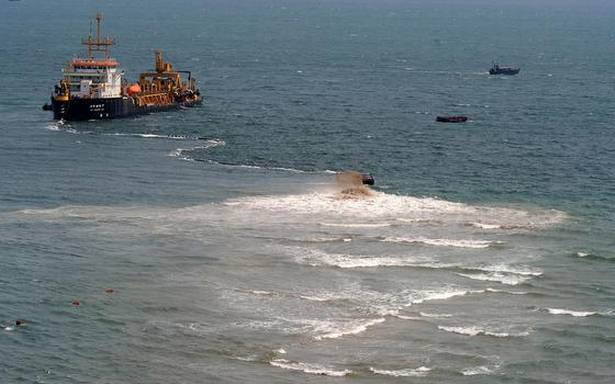The Government has floated the concept of undertaking channel deepening and maintenance works at major port trusts through the public-private-partnership (PPP) mode.
“A PPP model may be worked out for dredging projects with the hybrid model of combining the capital dredging with maintenance dredging for 10-20 years,” according to the draft dredging guidelines for major port trusts prepared by the ministry of ports, shipping and waterways.
“The revenue share between major ports and PPP operator may be the bidding parameter for floating the PPP projects. The existing PPP operators of the berth may share proportionate cost based on the volume of cargo handled along with the berths operated by the major ports themselves,” says the draft prepared by the ministry and circulated for public consultation.
The ministry has emphasised the need to increase the depth by 2-3 metres to 17 metre to handle higher capacity container vessels. The increased depth translates into reduction in transportation cost due to economies of scale as the cargo movement is shifted from Panamax to Capesize vessels for bulk cargo handling.
Given the high capital expenditure required for channel deepening works, the major ports may adopt the PPP mode to ensure funding from private agencies with support from the major ports.
Significant capital dredging is required at major ports in 3-5 years to handle the anticipated container vessels of 20,000 twenty-foot equivalent units (TEUs) capacity and bulk cargo carrying Capesize vessels.
The PPP model emerges as a “potential option with limited investment from the major ports,” the ministry said.
Adopting the PPP model for capital dredging will ensure that dredging is taken up as a “service requirement” for the port with minimal operation burden with the Port Authority.
The dredging industry is sceptical of the plan.
“PPP in dredging will be very difficult,” says a dredging industry executive. “Dredging is full of uncertainties; PPP is good for projects were certainty is there,” he said.
The complex traffic structure to be developed by major ports for different berth operators with different category of cargo is a key risk.
“As per the plan, the revenue for the PPP dredging operator will depend on the increase in traffic. And, linking it to traffic will bring in more uncertainty. A dredging contractor will put his money today and carry out the work, but he is not sure how and what he will be paid. Suppose, the contract is for 20 years and for the first ten years there is no return, what will he do if there is no incremental traffic coming,” he explained.
Stipulating measurable performance indicators including assured depth during the period of concession and adequate financial returns as per the financial viability structure also poses risk to the PPP model.
Source: Hellenic Shipping






